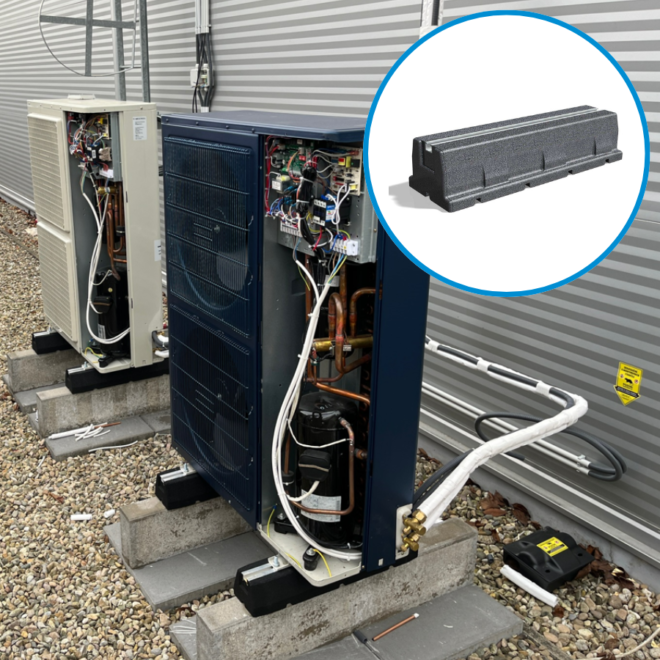Heat pump is a great technology, however it can also make life very uncomfortable. It's not always the equipment itself, but rather improper installation or placement that can cause noise transmitted to neighbouring properties. We probably all wish we had good neighbours. If you are already using or considering to purchase a heat pump, issues such as appropriate location and noise level should not be neglect.


At Microwell, we are continuously focusing on developing and manufacturing heat pumps not only with the best possible performance, but also with a quiet operation. Particularly when it comes to smaller living areas where houses and buildings are closer to each other, even a slight noise can disrupt your good relations with neighbours. These cases often result in restrictions, such as limitations in heat pump operation time. The machine can be prohibited to use from 10pm to 6am, which on the other hand can significantly complicate the situation for the user. That is why quiet operation is one of our priorities when designing every single Microwell heat pump model.
The regulation of the individual components is also a key factor, so that the heat pump does not whistle. Many so-called "inverter" pumps look ,,nice and attractive‘‘, but at certain specific points you can hear an unpleasant whistling sound, which is caused by incorrect adjustment and alignment of the individual components.

1. Use an original heat pump, which is inherently very quiet, for example our "BLACK INVERTER" model from our Microwell heat pump portfolio. Nominally, we are talking about "noise" at the level of a refrigerator when using the silent mode. With the right choice of heat pump capacity, the quiet mode can be used as soon as you reach the initial heating up to the target water temperature. Thus, silent mode can be used to gracefully maintain the water temperature, very economically really and also quietly. In addition, HP BLACK heat pump is the first to come with an IoT service console that enables 24/7 monitoring and historical data readout. By using he IoT service console all inspection, analysis and remote parameter adjustment by the contractor's technicians in the event of a failure, which is especially appreciated by less tech-savvy customers.

2. Always mount on rubber "base" - these are 13cm high and up to 16cm thick rubber blocks, which are excellent at absorbing vibrations and thus reducing the overall noise level of the heat pump operation.

3. Select the heat pump with a power reserve to be able to use the silent mode, which not only ensures significantly more quiet operation of the device but also increases its efficiency (given heat output at a lower cost).

4. Utilize a split design that has a separate water exchanger from the other parts. In this way, it is possible to place the compressor part with the fan up to 30 metres away from the water part, e.g. behind a tree, on the roof, etc. SPLIT design thus has a number of advantages in addition considering mounting flexibility. As the unit is up to 30 metres away from where a conventional heat pump would be, it cannot be heard, it is often not visible (roof mounting) and you can also be sure that children will not stick their fingers or branches in it.

5. Avoid enclosed spaces with flat or ceramic surfaces that reflect sound and thus multiply it sensationally.

6. If you have no choice, or have exhausted the above options, you can use sound absorbing measures such as a sound-absorbing wall or an "acoustic cover" that covers the entire heat pump. However, this solution is quite costly, as the price of the 'acoustic cover' is often at the price of the heat pump itself and in addition it restricts the airflow, thus reducing the overall performance and efficiency of the heat pump.

